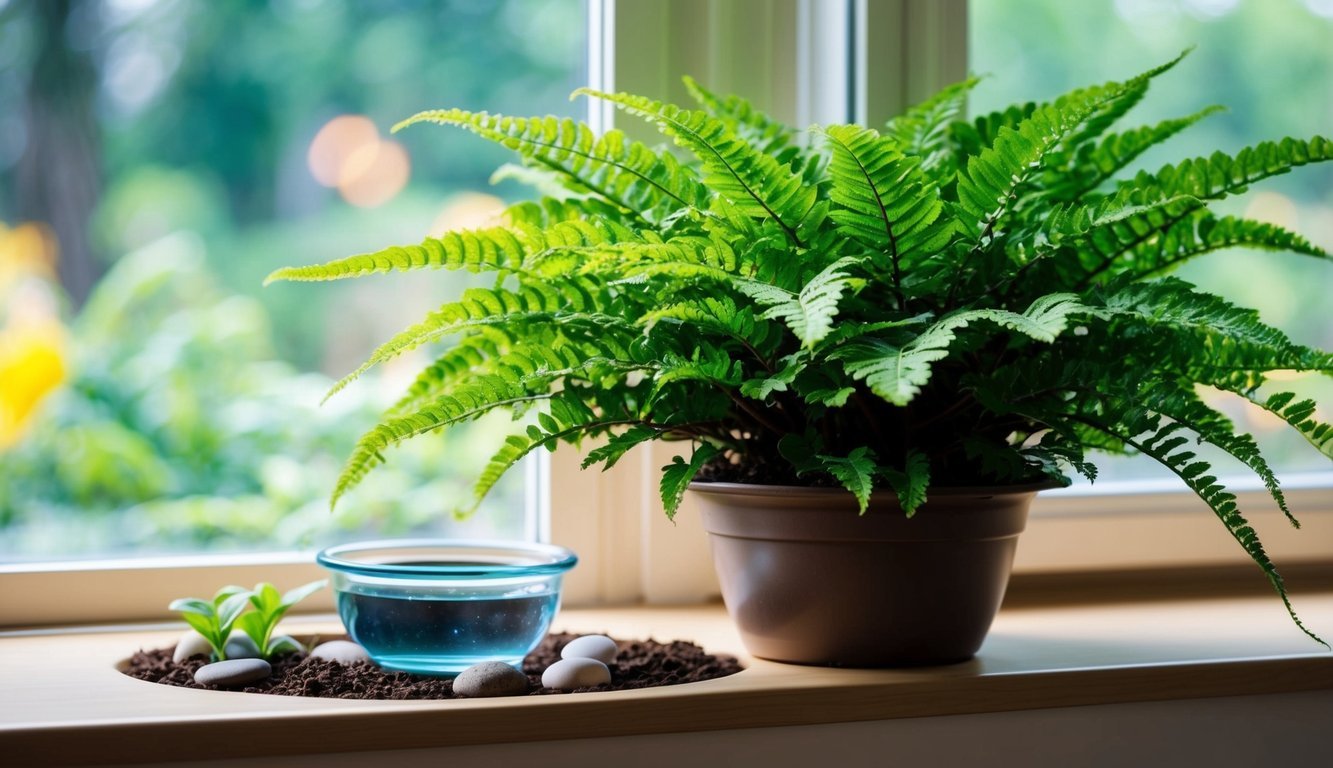
Ideal Lighting Scenarios
Light is a key factor for the success of Boston ferns.
Since these plants are native to the shaded floors of forests, they flourish in settings that mimic their natural habitat.
To promote the best growth, aim to place your fern where it can soak up two to eight hours of bright, indirect sunlight each day.
When taking your fern outdoors, position it under the gentle filtering provided by larger plants or a slatted structure.
While being mostly shaded is beneficial, be sure your fern receives some indirect light throughout the day.
For indoor ferns, a spot a few feet away from an east or west-facing window works wonders, as does a location near a south-facing window dressed with a light curtain.
Even in rooms with limited natural light, Boston ferns can survive, as long as they experience some indirect sunlight.
Just keep them shielded from direct rays, particularly during peak sunlight hours, and be prepared to adjust their placement as seasons change.
Too much bright light can lead to dry, brown tips on the fronds, while not enough light may impede growth and cause foliage to lose its vibrant colors.
Finding the sweet spot between ample indirect sunlight and avoiding total darkness is vital for your fern’s health.
Smart Watering Techniques
Watering your Boston fern appropriately can greatly influence its vitality.
Overwatering risks rot in the roots, hindering nutrient absorption, while underwatering may dry out the fronds and disrupt vital processes like photosynthesis.
To gauge when it’s time to water, check the soil’s moisture by inserting your finger into the top inch.
If it feels dry, it’s time for a drink.
For ferns in densely potted arrangements, lifting the pot can help; if it feels light, it may signal the need for watering.
Keep in mind that the plant’s hydration needs can vary with shifts in temperature and humidity levels.
Generally, more water is required in warm, sunny conditions, while cooler weather calls for less.
Recognizing Leaf Damage
If you start to see crunchy, brown tips on your fern’s fronds, it’s crucial to investigate the underlying cause, though there’s often no cause for immediate alarm.
Dry air is a common factor.
To remedy this, avoid setting your fern near drafts or direct heat sources and consider relocating it to a more humid environment for better results.
While you might consider misting the leaves to boost humidity, this can inadvertently encourage fungal problems and only temporarily elevate moisture levels.
For those facing particularly dry conditions, a humidifier can create a more accommodating atmosphere.
Source: Epicgardening.com

